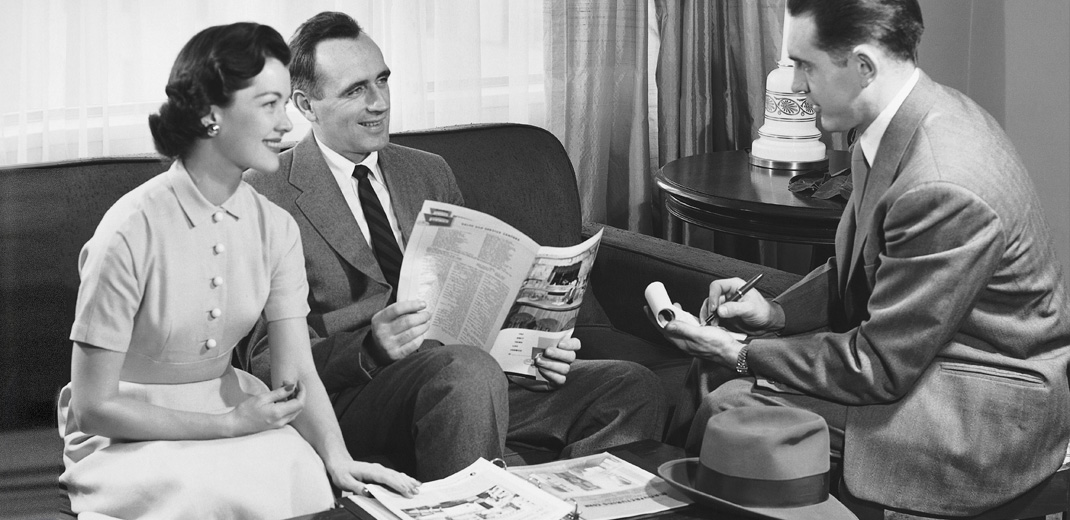If you break marketing down to its end goal, the primary objective is to sell. Just like sales and finance teams, marketers are after the holy grail of business – the all mighty dollar. While most will agree that this is true, they’ll also agree that today marketing is also about engagement and sharing. The best marketers understand the history that moved marketing towards today’s engage, share and buy model, how customers have evolved with media and technology and they understand how brand storytelling moves them towards action. Marketing programs that focus on engagement, sharing and then the sale have bigger, stronger and faster campaigns.
Let’s start with a story of how marketing worked in the 70’s
When I was about 7 years old I wanted to be Steve Austin, the “Six Million Dollar Man.” I’m pretty sure this was true for most kids my age, he was the coolest of the cool. If you’re not familiar with this AMAZING TV show, have a look at the intro, you’ll understand after you watch it – Go ahead, I’ll wait.
You see, Steve was everything I wanted to be: handsome, athletic and an astronaut who’s so valuable to the world that when he gets hurt they don’t just let him die, they REBUILD him. They make him bigger, stronger and faster; he becomes the world’s first bionic man.
As a twig skinny non-athletic child, I emotionally connected to Steve because he defined cool. However, I was a smart kid, I knew that I would never be that cool.
No one is, right?
That’s what I thought, and then I saw this:
If you’re like me, or at least the 7 year old me, what you see in this commercial is a boy who is transformed into Steve Austin when he ties on his magical new Zips shoes. This seemingly bionic boy in Zips is suddenly bigger, stronger and faster. And when he jumps, it’s so high “he might not ever come down.” My new mission in life was to get these shoes.
Why did this ad work so well?
Two reasons: disruptive advertising and brand storytelling. The two combined had me begging for the shoes.
1: Disruptive Advertising: They got to me where I consumed media
At the time I saw this commercial disruptive marketing worked, really well. The brands with the biggest pockets engrained themselves into our brains through intrusive billboards, TV and radio spots and magazine ads. As consumers we could not avoid the ads because they were front and center in our everyday lives, we could not fast forward past them or change the settings in our browsers to keep them from popping up. We were stuck with ads and readily accepted it because they represented the personal cost of media consumption. Storytelling was used purely as a means to get a sale and advertisers told mini stories that moved us to buy… Now!
As I sat and watched cartoons I had no choice but to watch the ads as the show paused for “important messages from sponsors.”
2: Brand Storytelling: Zips connected emotionally
As reported by Psychology Today, our emotions have a lot more to do with what we buy than we might like to think. While most of us would like to believe that we make our purchase decisions based on our needs and carefully evaluated analysis of product benefits, more often than not, we buy because we want to, because of how the purchase makes us feel.
In the case of Zips, sure, they are blatantly selling; this is not what I would call a “brand ad.” But, they are clever and use subtle storytelling tools that are easily associated with Steve Austin:
- The music is very similar to the “6 Million Dollar Man” theme song, a song every fan knew well
- They use a sound similar to the “bionic sound” we heard when Steve Austin ran or did something bionic
- The actor they chose is not athletic, they are trying to appeal to the kids who want to be athletic, not the actual athletes
- The narrative transforms a boy into a super kid – and that is awesome
By hitting me where I consumed media and telling me a story that would resonate the Zips advertising machine built a story in my head that said I needed these shoes and moved me to action (AKA begging my Mom to get me the shoes!*).
Oh, how things have changed
As media choices expanded and evolved, so did consumer control over technology. Consumers rapidly moved from a time where disruptive ads were accepted to a time where they have seemingly unlimited control over their consumption of media. With this control came the ability to fast forward past ads and customize media to avoid advertising (mostly). Of course this created a problem for media and advertisers.
The clever marketers found new ways to wedge advertising into the lives of consumers, and they quickly became jaded. They learned to ignore traditional advertising.
Which leads us to present day.
Consumers now have so much control over their consumption of media that the marketing game leans in favor of permission based as opposed to disruptive advertising.
With consumers becoming more and more immune to blatant ads and selling, marketers need to think differently and create an emotional bond between brand and customer, similar to what I had with my Zips. Enter the age of brand storytelling.
Permission based marketing + brand storytelling = engage, share and buy
The brilliance of the combination of permission based marketing and great storytelling is that it matches both the needs of the customer, and those of the marketer:
- The customer finds a non-disruptive form of content seemingly accidentally as they consume media (permission based) and that content is both entertaining and it connects emotionally (brand storytelling). If all goes as planned, the connection is so strong that they will engage and/or share with friends. Over time, as their brand affinity grows so does the likelihood of a purchase.
- The marketer gets a brand impression that manages to build an emotional connection between the brand and their customer. That customer becomes an advocate of the brand by sharing the content with their friends and those friends do the same. Over time the viral impact of sharing and engagement lead to more buyers.
The rise of the jaded consumer and permission-based marketing has upped the importance of story and connection.
3 brand storytelling examples from brands that get it
Subaru
Subaru customers love quality and care about safety and family. With the use of two words, “they lived,” and powerful imagery of a wrecked car, Subaru built a story that connected with their core customer emotionally. Over 200,000 fans of the brand have watched this video with chills ran down their spines.
John Lewis Department Store
Love is a universal story we all relate with on a deep emotional level. In the John Lewis commercial we meet a young boy and his pet penguin. As the story builds we learn that the boy’s mission is to find love for his friend, because it is what he wants most. Of course there’s a twist at the end, and I’m pretty sure everyone that watches this video responds with an “awwww” as the story wraps up. Sure, the ad ran on TV, but more importantly people love it so much that they took to the Internet to watch again and share with friends. To date the video has been viewed over 18 million times.
Honda
We all have a fantasy life, and this video lets Honda customers experience that life in an interactive, and very well done, video. As the video starts we see a man picking up his kids from school and driving them to a party. A pretty simple journey for sure. However, if we press down the “R” key on our keyboard we get to experience the “double sided story” which represents the fantasy life of an undercover cop working the night shift. This story expresses the fantasies we all have, and shows the versatility of the Type R Civic model. No surprise, fans connected with the video and it’s a fantastic example of brand storytelling.
Note: The embed version of this video does not feature full video functionality as described, for the FULL experience click here.
Focus on engagement, sharing and then the sale to make your marketing bigger, stronger and faster
As consumers become more and more jaded with advertising, marketers should be thinking about permission marketing, be it a video, traditional content marketing, social media or something we’ve never seen before.
Every brand has a story, and it is the job of the marketer to find a way to tell that story in a way that resonates with their customer. Subaru, John Lewis, Honda, Zips and hundreds of other brands are working every day to find ways to connect with their customers.
Sure, the ultimate goal of marketing is to sell. But, if you think of the cycle as less direct, and more of a means to how marketing can lead to engagement and sharing, the sale will come.
Engage, share and sale lead to bigger, stronger and faster marketing.
*For the record, I did get a pair of Zips and I asked my Mom about it this past weekend. She said I truly believed they made me bigger, stronger and faster. It seems I would show my shoes to people and then demonstrate how fast they made me run. The storytelling worked and to this day I would love another pair, if only they made them in adult sizes…









